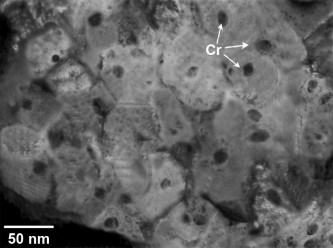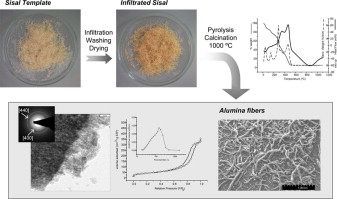Artículos SCI
2014
2014
Nanotecnología en Superficies y Plasma
Low Temperature Production of Formaldehyde from Carbon Dioxide and Ethane by Plasma-Assisted Catalysis in a Ferroelectrically Moderated Dielectric Barrier Discharge Reactor
Gomez-Ramirez, A; Rico, VJ; Cotrino, J; Gonzalez-Elipe, A; Lambert, RMACS Catalysis, 4 (2014) 402-408
Show abstract ▽

Plasma-assisted catalysis of the reaction between CO2 and C2H6 in a single-pass, ferroelectrically moderated dielectric barrier discharge reactor has been studied at near ambient temperature as a function of physicochemical and electrical reaction variables. The presence of small amounts of a vanadia/alumina catalyst dispersed on the BaTiO3 ferroelectric markedly enhanced the production of formaldehyde, the focus of this work. A maximum HCOH selectivity of 11.4% (defined with respect to the number of ethane carbon atoms consumed) at 100% ethane conversion was achieved, the other products being CO, H2O, H2, CH4 and a small amount of C3H8. N2O was also an effective partial oxidant (HCOH selectivity 8.9%) whereas use of O2 led to complete combustion, behavior that may be rationalized in terms of the electron impact excitation cross sections of the three oxidants. Control experiments with the coproducts CH4 and C3H8 showed that these species were not intermediates in HCOH formation from C2H6. Analysis of reactor performance as a function of discharge characteristics revealed that formaldehyde formation was strongly favored at low frequencies where the zero-current fraction of the duty cycle was greatest, the implication being that plasma processes also acted to destroy previously formed products. A tentative reaction mechanism is proposed that accounts for the broad features of formaldehyde production.
Febrero, 2014 | DOI: 10.1021/cs4008528
Reactividad de Sólidos - Materiales y Procesos Catalíticos de Interés Ambiental y Energético
Spinodal decomposition and precipitation in Cu–Cr nanocomposite
Sheibani, S; Heshmati-Manesh, S; Ataie, A; Caballero, A; Criado, JMJournal of Alloys and Compounds, 587 (2014) 670-676
Show abstract ▽

In this study, spinodal decomposition and precipitation mechanism of mechanically alloyed supersaturated Cu–3wt.%Cr and Cu–5wt.%Cr solid solutions was investigated under nonisothermal aging. Decomposition mechanism and kinetics were studied using differential scanning calorimetry (DSC) and X-ray diffraction (XRD) techniques. Also, the microstructure was characterized by transmission electron microscopy (TEM). Effect of Al2O3 reinforcement on the aging kinetics was also evaluated. It was found that Cu–3wt.%Cr and Cu–5wt.%Cr solid solutions undergo spinodal decomposition at initial stages of ageing. However, decomposition mechanism was changed to nucleation and growth by the aging progress. The aging kinetics for the Cu–Cr/Al2O3 composition appeared to be slightly faster than that for Cu–Cr, since the ageing activation energy is decreased in presence of Al2O3 nano-particles. This behavior is probably due to the higher dislocation density and other structural defects previously produced during ball milling. A detailed comparison of the DSC results with those obtained by TEM, showing good consistency, has been presented. The average size of Cr-rich precipitates was about 10 nm in the copper matrix.
Febrero, 2014 | DOI: 10.1016/j.jallcom.2013.11.019
Materiales Ópticos Multifuncionales
Nanometer-Scale Precision Tuning of 3D Photonic Crystals Made Possible Using Polyelectrolytes with Controlled Short Chain Length and Narrow Polydispersity
Wang, Z; Calvo, ME; Masson, G; Arsenault, AC; Peiris, F; Mamak, M; Miguez, H; Manners, I; Ozin, GAAdvanced Materials Interfaces, 1 (2014) Art. 1300051
Show abstract ▽

Nanometer-scale tuning of the optical properties of prefabricated photonic crystals is achieved via layer-by-layer assembly of polyelectrolytes in the interstitial spaces of the photonic lattice. The key to the approach is using polyelectrolytes with controlled short chain lengths. This ensures they do not block the air voids, thereby maintaining uniform coating and thus precise and reproducible optical
Febrero, 2014 | DOI: 10.1002/admi.201300051
Reactividad de Sólidos
Characterization of thermally stable gamma alumina fibres biomimicking sisal
Benitez-Guerrero, M; Perez-Maqueda, LA; Sanchez-Jimenez, PE; Pascual-Cosp, JMicroporous and Mesoporous Materials, 185 (2014) 167-178
Show abstract ▽

Mesoporous gamma alumina fibres of high surface area, stable up to 1000 °C, were synthesized by bioreplica technique using sisal fibres as templates. Alumina formation during pyrolysis and calcination of fibres infiltrated with aluminium chloride solution has been studied, paying special attention to the interaction between the precursor and sisal fibres, using several experimental techniques such as ATR-FTIR, coupled TG-FTIR and thermo-XRD analysis. The morphology and microstructure of the resulting alumina fibres were characterized using SEM and TEM. The crystallographic analysis of the alumina sample performed by electron and X-ray diffraction suggests that fibres are constituted by η and γ-Al2O3 crystallites, whose chemical structure was confirmed by ATR-FTIR and Al27-MAS-NMR. The specific surface area and porosity of ceramic fibres were determined by N2 and CO2 adsorption–desorption measurements. Resulting alumina fibres retain high specific surface areas of 200 and 150 m2/g even after calcination at 1000 °C for 15 h in dry air and for 4 h in wet air, respectively.
Febrero, 2014 | DOI: 10.1016/j.micromeso.2013.11.012
Materiales de Diseño para la Energía y Medioambiente
New Bio-Ceramization Processes Applied to Vegetable Hierarchical Structures for Bone Regeneration: An Experimental Model in Sheep
Filardo, G; Kon, E; Tampieri, A; Cabezas-Rodriguez, R; Di Martino, A; Fini, M; Giavaresi, G; Lelli, M; Martinez-Fernandez, J; Martini, L; Ramirez-Rico, J; Salamanna, F; Sandri, M; Sprio, S; Marcacci, MTissue Engineering Part A, 20 (2014) 763-773
Show abstract ▽

Bone loss is still a major problem in orthopedics. The purpose of this experimental study is to evaluate the safety and regenerative potential of a new scaffold based on a bio-ceramization process for bone regeneration in long diaphyseal defects in a sheep model. The scaffold was obtained by transformation of wood pieces into porous biomorphic silicon carbide (BioSiC®). The process enabled the maintenance of the original wood microstructure, thus exhibiting hierarchically organized porosity and high mechanical strength. To improve cell adhesion and osseointegration, the external surface of the hollow cylinder was made more bioactive by electrodeposition of a uniform layer of collagen fibers that were mineralized with biomimetic hydroxyapatite, whereas the internal part was filled with a bio-hybrid HA/collagen composite. The final scaffold was then implanted in the metatarsus of 15 crossbred (Merinos-Sarda) adult sheep, divided into 3 groups: scaffold alone, scaffold with platelet-rich plasma (PRP) augmentation, and scaffold with bone marrow stromal cells (BMSCs) added during implantation. Radiological analysis was performed at 4, 8, 12 weeks, and 4 months, when animals were sacrificed for the final radiological, histological, and histomorphometric evaluation. In all tested treatments, these analyses highlighted the presence of newly formed bone at the bone scaffolds' interface. Although a lack of substantial effect of PRP was demonstrated, the scaffold+BMSC augmentation showed the highest value of bone-to-implant contact and new bone growth inside the scaffold. The findings of this study suggest the potential of bio-ceramization processes applied to vegetable hierarchical structures for the production of wood-derived bone scaffolds, and document a suitable augmentation procedure in enhancing bone regeneration, particularly when combined with BMSCs.
Febrero, 2014 | DOI: 10.1089/ten.tea.2013.0108
- ‹ anterior
- 285 of 420
- siguiente ›














